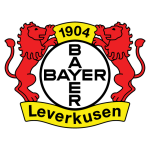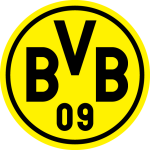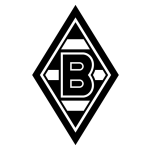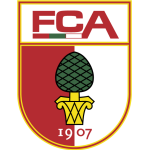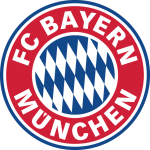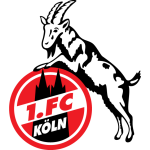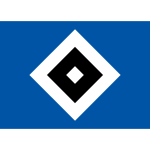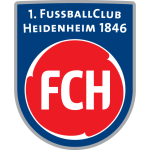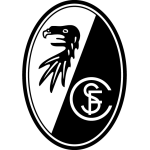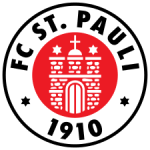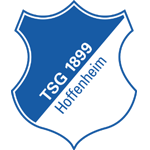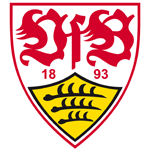German Football Clubs: All Teams & Complete Guide to Bundesliga, 2. Bundesliga & Frauen Bundesliga (2025)
From everyday life to Germany’s football landscape, efficiency has been the focal point of the country’s approach. The footballing heritage of Germany is all about the passion, grit, and the structure of the German football pyramid, like no other. There is no secret to the European success of German clubs, as teams like Borussia Dortmund, Bayern Munich and Hamburg SV have made the country proud in several global competitions over the years.
While the star-studded Bundesliga is the league that is considered among the top five in Europe, at the heart of the German football landscape, there is a perfectly-structured league system that not just celebrates the most illustrious league of the country but also focuses on the development of German football clubs and the players across the grassroots level.
From the successful progress of the German Giants such as Bayern Munich and Borussia Dortmund to community-driven clubs, all the clubs across different divisions of German football form an efficient foundation that allows consistent development across all the divisions. When it comes to the German football pyramid, the multi-tiered model makes sure of mobility across the divisions from the Bundesliga to the 2. Bundesliga teams and so on. From commitment towards the consistent development at the top flight of German football to the approach towards youth development, there are many principles within the football in Germany that make the nation stand out from the others.
German Football Teams: History and Evolution of Football Clubs in Germany
One of the reasons why the German National Team has been the favourite in international competitions is their depth of talent within the league structure of the nation. The football teams in Germany across all competitions follow a systematic approach towards the development and nourishment of talent. Inspired by English expats and schoolboys, Football in Germany started to bloom in the late 19th century. Ever since its inception, we have seen some of the greatest German players playing for German football teams across all divisions. If we turn the pages of history, the oldest recorded football club in Germany is BFC Germania 1888, which was established in the capital of the country, Berlin. Safe to say, it was the start of the great things to come in German Football. By the 20th century, the sport had undergone massive development and inspired the inception of many local clubs and competitions.
However, if there was only one thing that was a priority to sustain the growth in German football, that was having a structure. This is where DFB came in, after its inception in 1900. In addition to giving the German football teams and the competition's structure, it nationalised the approach of the sport. While the youth development was the focal point throughout all this, with tactical innovation as the league system is yet to be formed to perfection, post-war, we saw the introduction of the Bundesliga, which is now considered one of the top competitions in Europe. Given the development of the divisions and the German football clubs, fast forward to now, the clubs’ innovative approach of 50+1 ownership models is admired by the whole world.
German Football League System
By no means, the footballing success of Germany been a coincidence. The systematic approach that is deeply rooted in a unified league formula is the reason behind the popularity of the sport across German football clubs in different divisions. One of the biggest reasons behind the system’s high standard of competitiveness and fair play is because of the backing and support of both DFB and DFL.
Throughout the German football divisions, every club has to get an official license every season. It comes after meeting certain requirements in the financial and sporting aspects. The typical seasons in the German football divisions run from August to May. Throughout the format, the clubs across different divisions compete in a round robin format. Just like all the competitive leagues in Europe, promotion and relegation each year makes sure of fierce competition among the teams in the league. In addition to the drama and rivalries at the top flights, be it the derbies or European fixtures, youth development is also a focal point in the German Football system. Take a look at how many big talents have come out from German Football in the last decade, and you will see for yourself.
German Football Pyramid
The German Football pyramid is actually linked to the nature of the German football league system that spans from the amateur levels to the elite Bundesliga. Every level is connected via promotion and relegation, much like other elite leagues that boast ambitious clubs to climb the ranks or risk demotion based on performance. This kind of structure and process makes sure that the competition between the German football clubs remains healthy from the grassroots to the elite league.
German Football Divisions
Much like the elite football leagues in the World, every season, the clubs that finish at the top of their respective divisions earn promotion (after the Bundesliga, of course), while the bottom clubs get relegated to the league below. Here is the pyramid of German Football Divisions:
| Tier | Division Name | Total Number of Clubs |
|---|---|---|
| 1 | Bundesliga | 18 |
| 2 | 2. Bundesliga | 18 |
| 3 | 3. Liga | 20 |
| 4 | Regionalliga | 5 regional divisions (approx. 90 clubs) |
| 5+ | Oberliga & Below | Varies regionally |
Top 10 Most Successful German Football Clubs
When it comes to success in domestic and European competitions, there are many top football teams in Germany, in the form of Bundesliga teams and others. Let us have a quick look at the top most successful German Football clubs:
| Club Name | Founding Year | No. of Trophies Won |
|---|---|---|
| Bayern Munich | 1900 | 84 |
| Borussia Dortmund | 1909 | 22 |
| Schalke 04 | 1904 | 15 |
| Werder Bremen | 1899 | 14 |
| Hamburg SV | 1887 | 13 |
| Borussia Mönchengladbach | 1900 | 11 |
| VfB Stuttgart | 1893 | 10 |
| Eintracht Frankfurt | 1899 | 9 |
| FC Köln | 1948 | 8 |
| FC Kaiserslautern | 1900 | 6 |
While there are many success stories throughout the German League divisions, these 10 clubs are the most successful German football clubs as of now.
Bundesliga Teams
The Bundesliga and the Bundesliga teams represent the highest level of football in Germany. From youth-focused policies and high attendance, the league continues to be the competition to play for among the clubs through various divisions, who want to get promoted in the league and compete for the most prestigious domestic title in the country. Let us take a look at the German Football teams in the Bundesliga
| Team Name | City | Year Founded | Stadium |
|---|---|---|---|
| Bayern Munich | Munich | 1900 | Allianz Arena |
| Borussia Dortmund | Dortmund | 1909 | Signal Iduna Park |
| RB Leipzig | Leipzig | 2009 | Red Bull Arena |
| Bayer Leverkusen | Leverkusen | 1904 | BayArena |
| Union Berlin | Berlin | 1966 | Stadion An der Alten Försterei |
| SC Freiburg | Freiburg | 1904 | Europa-Park Stadion |
| Eintracht Frankfurt | Frankfurt | 1899 | Deutsche Bank Park |
| VfL Wolfsburg | Wolfsburg | 1945 | Volkswagen Arena |
| Borussia Mönchengladbach | Mönchengladbach | 1900 | Borussia-Park |
| Mainz 05 | Mainz | 1905 | MEWA Arena |
| Hoffenheim | Sinsheim | 1899 | PreZero Arena |
| FC Augsburg | Augsburg | 1907 | WWK Arena |
| VfB Stuttgart | Stuttgart | 1893 | MHPArena |
| Werder Bremen | Bremen | 1899 | Weserstadion |
| FC Heidenheim | Heidenheim | 1846 | Voith-Arena |
| Darmstadt 98 | Darmstadt | 1898 | Merck-Stadion am Böllenfalltor |
| Fortuna Düsseldorf | Düsseldorf | 1895 | Merkur Spiel-Arena |
| Hannover 96 | Hanover | 1896 | Heinz von Heiden Arena |
2. Bundesliga Teams
For the European audience who do not know much about German Football divisions, 2. Bundesliga Teams compete for a spot in promotion to the Bundesliga, as this is the vital second tier of German football. It is highly competitive and acts as the proving grounds for the clubs. Here are the 2. Bundesliga Teams:
| Team Name | City | Year Founded | Stadium |
|---|---|---|---|
| 1. FC Nürnberg | Nuremberg | 1900 | Max-Morlock-Stadion |
| Hertha BSC | Berlin | 1892 | Olympiastadion Berlin |
| Hamburger SV | Hamburg | 1887 | Volksparkstadion |
| FC St. Pauli | Hamburg | 1910 | Millerntor-Stadion |
| SpVgg Greuther Fürth | Fürth | 1903 | Sportpark Ronhof |
| Hansa Rostock | Rostock | 1965 | Ostseestadion |
| Eintracht Braunschweig | Braunschweig | 1895 | Eintracht-Stadion |
| Karlsruher SC | Karlsruhe | 1894 | BBBank Wildpark |
| SC Paderborn 07 | Paderborn | 1907 | Home Deluxe Arena |
| Jahn Regensburg | Regensburg | 1899 | Jahnstadion Regensburg |
| 1. FC Magdeburg | Magdeburg | 1965 | MDCC-Arena |
| SV Elversberg | Elversberg | 1907 | URSAPHARM-Arena |
| VfL Osnabrück | Osnabrück | 1899 | Stadion an der Bremer Brücke |
| Holstein Kiel | Kiel | 1900 | Holstein-Stadion |
| TSV 1860 Munich | Munich | 1860 | Grünwalder Stadion |
| Arminia Bielefeld | Bielefeld | 1905 | SchücoArena |
| Rot-Weiss Essen | Essen | 1907 | Stadion Essen |
| Dynamo Dresden | Dresden | 1953 | Rudolf-Harbig-Stadion |
Frauen Bundesliga Teams
If the Bundesliga is the top competition for men's football clubs in Germany, the Frauen Bundesliga is the top-tier women’s football league of Germany. With a growing football fanbase and big media coverage, women’s football in Germany is in its golden period. Here are the Frauen Bundesliga Teams:
| Team Name | City | Year Founded | Stadium |
|---|---|---|---|
| VfL Wolfsburg Women | Wolfsburg | 2003 | AOK Stadion |
| Bayern Munich Women | Munich | 1970 | FC Bayern Campus |
| Eintracht Frankfurt Women | Frankfurt | 1998 | Stadion am Brentanobad |
| TSG Hoffenheim Women | Hoffenheim | 2007 | Dietmar-Hopp-Stadion |
| SC Freiburg Women | Freiburg | 2001 | Möslestadion |
| Bayer Leverkusen Women | Leverkusen | 2008 | Ulrich-Haberland-Stadion |
| SGS Essen Women | Essen | 1973 | Stadion Essen |
| Werder Bremen Women | Bremen | 2007 | Weserstadion Platz 11 |
| RB Leipzig Women | Leipzig | 2016 | Stadion am Bad |
| MSV Duisburg Women | Duisburg | 2001 | PCC-Stadion |
| 1. FC Nürnberg Women | Nuremberg | 2020 | Max-Morlock-Platz |
| Carl Zeiss Jena Women | Jena | 1991 | Ernst-Abbe-Sportfeld |


